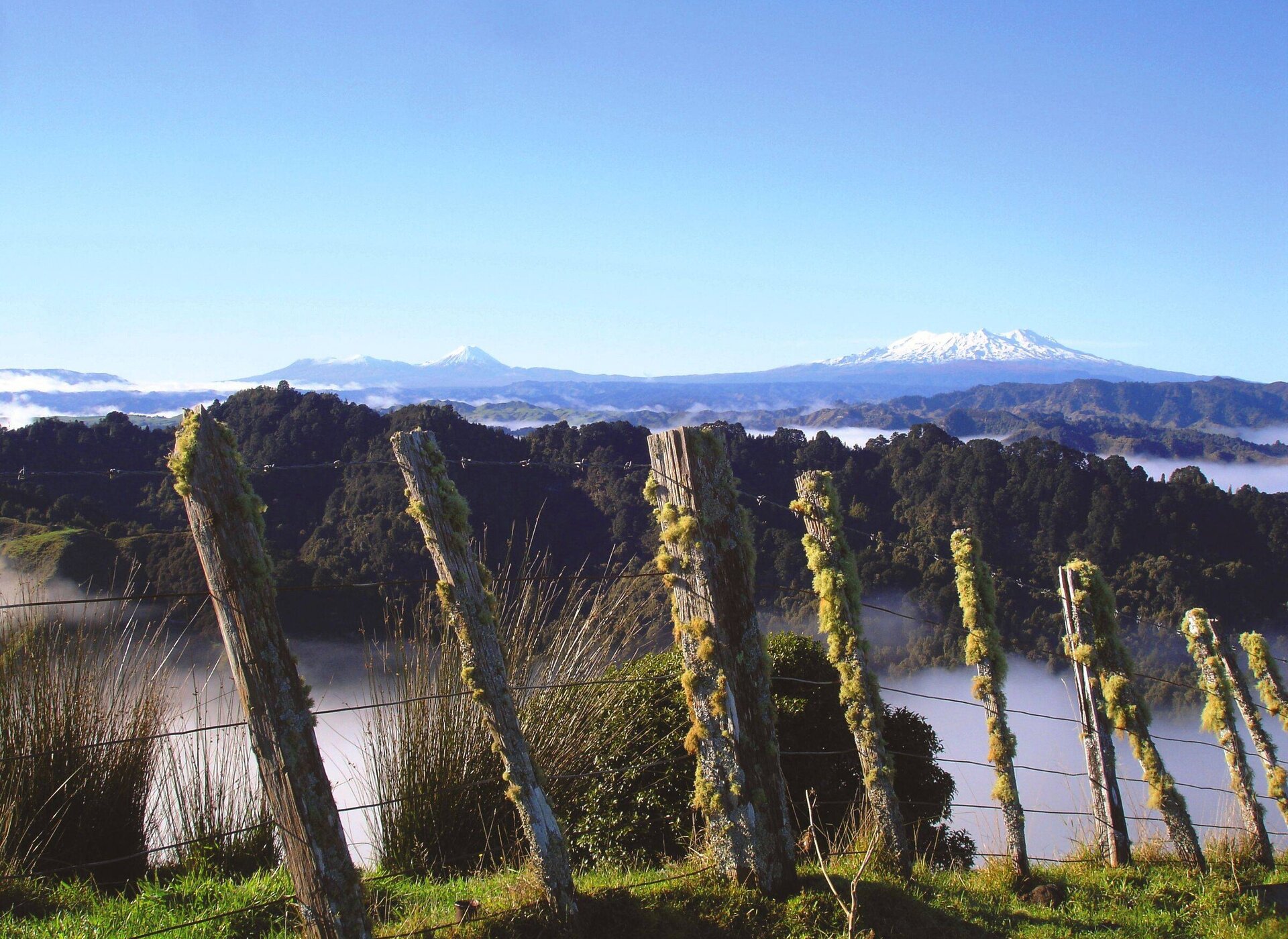Kaiwhakauka
Originally a six-foot horse and cart route, then a tramping track, the Kaiwhakauka Track is a rewarding addition to the Mountains to Sea Cycle Trails.
The twin valleys – Kaiwhakauka and Mangapurua – share fascinating and ultimately sorrowful WWI settler history, with the iconic Bridge to Nowhere a fittingly forlorn finale to the story.
Advanced riding especially in wet conditions | Check status
Highlights
- Blue Duck Station with native Whio, Kiwi and other natives
- Remote, rural valley packed with history
- View-filled climb
- Secret waterfalls
- Old-fashioned farm heritage
- Link to Mangapurua Track
Trail Route
Bike packers and single-track enthusiasts love this remote adventurous route.
Exceptionally beautiful, boasting hidden creeks, lush bush, and pretty farmland, and rustic relics of a bygone era. The fact that few people venture here adds a feeling of intrepid adventure. The Kaiwhakauka is a true back country trail best suited to fit, experienced, and well-equipped mountain bikers with no fear of sweat and mud.
The trail has been upgraded over the last season, and only 2kms of the Whanganui National Park section is still to be completed. This short section is still relatively narrow, technical single-track that can get very muddy after rain, if you're not sure just walk your bike over these short sections.
An amazing ride in the dry - this track can certainly take its toll on your gear in the wet when the tracks papa clay surface turns very sticky. Plan ahead.
The trail starts at Blue Duck Station at Whakahoro, on the banks of the Whanganui River, 45km west of SH4 near Owhango. The station is a working farm, so named for the resident whio (blue ducks). The team put considerable work into conservation, particularly Whio and Kiwi. They also offer authentic, homespun hospitality in both food and lodging. It is a great spot to recharge before heading out on the Kaiwhakauka.
Follow the (sometimes muddy) gravel road up towards the Whanganui National Park entrance. Along the way take a few minutes to climb down the short walking track to admire the waterfall that cascades into a canyon that is also home to glow worms, whio and more.
Just before heading into the bush take time to explore the “Depot”. A historical stone floored building filled with remnants of the past, used to store deliveries from the riverboats for the settlers of the area.
Through the gate, the track leads up the valley through a mixture of regenerating bush and farmland to the Whanganui National Park boundary.
From the park boundary its primarily single track with some steep drops to the river – walk if you need to. Eventually you come to the old Mosley homestead site near the Waione Stream. The open clearing here lends itself well to camping (there is a shelter here).
The track continues towards Cootes’ homestead (private land), crossing many small, bridged side streams with only a few small open flats. The old Tobin homestead, which is marked by an old chimney stack, can be seen to the right of the track.
From here there is a steady climb of 3.2km of a mostly clay farm road through relatively undisturbed mixed tawa/ podocarp forest to the junction marked by a carved tōtara pou on the old Kaiwhakauka and Mangapurua roads. The pou symbolises the ngahere (forest) and provides spiritual and cultural safety for visitors. The pou also pays tribute to the settlers of the Mangapurua and Kaiwhakauka Valleys
Need to Know
The Kaiwhakauka Track is made up of remote, rough-and-ready backcountry singletrack and 4WD track, much of which is on papa clay – smooth, fast and flowing when dry, but super-slippery and sticky in the wet.
It's a Grade 4 (Advanced) trail best suited to experienced mountain bikers, rain or shine.
A good-quality, well-maintained mountain bike is essential. Decent bike mechanical skills are a must as it’s a long way from help.
Mountains to Sea kilometre markers line the trail at regular intervals and track junctions are clearly signposted.
The best time to ride the track is between November and April when the weather is most settled. However, heavy rain can occur at any time of year in Whanganui National Park and track conditions can change quickly. Riders should therefore be prepared for every eventuality.
Be sure to check the weather forecast, and pick a fine day to ride if at all possible. Check with the team at Blue Duck Station or our Trail Status page for any trail cautions/alerts.
This is a wilderness ride with no shops or services beyond Whakahoro. Riders should take plenty of food and water, although there are places to fill water bottles along the way.
There is no cellphone reception on the track. Riders should consider carrying a PLB (personal locator beacon) or spot tracker.
All shuttle and jet boat transport must be booked in advance.
There are toilets at the start of the track (Whakahoro), the middle (Mosley), and at Mangapurua Trig just beyond the intersection with the Mangapurua Track (on which there are more toilets at helpful intervals).















